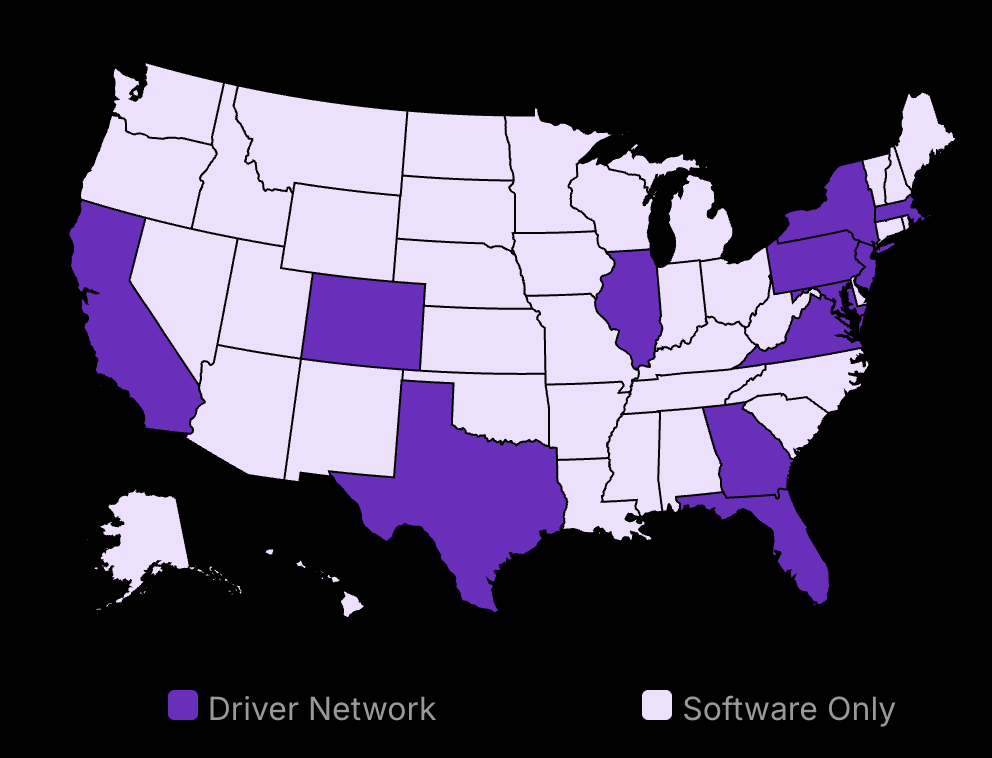You’re drowning in tasks, juggling clients, and praying your marketing efforts work. Sound familiar? Welcome to the world of small business ownership, where every minute counts and every dollar matters. But what if I told you there’s a way to multiply your impact without cloning yourself?
Ready to turn your marketing from a constant headache into a well-oiled machine? Buckle up.
We’re about to explore how the right automation tools can transform your business, saving you time, money, and sanity.

Metrobi drivers are rated 4.97 out of 5
Trusted by local businesses for:
- Background-checked professionals
- Specialized in business deliveries
- Same drivers for consistency
- 4.97/5 average delivery rating
Benefits of Marketing Automation for Small Businesses
-
Marketing automation saves time and resources.
-
Automation provides better customer insights.
-
Increases efficiency and improves marketing campaigns.
Time and Resource Management
Automating marketing tasks helps make sure small businesses spend their time on what truly matters. By scheduling social media posts and campaigns in advance, businesses avoid the repetitive task of daily posting. This planning allows teams to work on more strategic tasks, such as campaign analysis or content creation. Another important aspect is the automation of email responses. With pre-set answers to common questions, businesses can improve customer response times. Additionally, automating tasks like data entry reduces human error and speeds up lead management processes.
Scheduled Content and Campaigns
By using automation tools, you can plan and schedule content weeks or even months ahead. This approach provides consistency in messaging and helps maintain engagement with the audience. Furthermore, scheduling helps businesses align campaigns with significant dates or events without last-minute rushes.
Automated Responses and Data Tasks
Emails and inquiries often flood small businesses, but automated responses can help filter and prioritize these interactions. Tools can send initial replies to customer inquiries, ensuring quick communication. For data entry, using automation reduces the risk of errors during manual input. Automation handles newsletter sign-ups, client registration, or any customer data collection efficiently, freeing up staff resources for other tasks. Moreover, services like a dependable delivery service in Dallas can streamline logistics, further allowing businesses to focus on core operations.
Enhanced Customer Insights
Collecting and analyzing customer data is crucial for small businesses looking to improve their marketing strategies. Marketing automation allows businesses to gather valuable customer information through their interactions. This data can uncover patterns that provide deep insights into customer behavior and preferences.
Additionally, for businesses that require reliable delivery solutions, partnering with local services can enhance overall operational efficiency. For instance, understanding the landscape of couriers in Sacramento can help small businesses streamline their logistics and customer delivery processes, ensuring that products reach their customers promptly and reliably.
Data Collection From Interactions
Every touchpoint with a customer, whether it’s through social media, email, or web visits, provides an opportunity to collect data. Automation tools can track these interactions and compile relevant information. For small businesses, these insights form the foundation of more targeted marketing efforts.
Targeting Marketing Strategies
Instead of blanket approaches, businesses can tailor their email marketing campaigns to specific customer segments. This kind of targeting is effective because it speaks directly to the individual’s needs or interests.
Boosting Efficiency
Efficiency is a core benefit of any marketing automation tool, particularly when performing routine tasks. Repetitive jobs such as sending follow-up emails or scheduling reminders often consume workers’ time. Automation tools allow businesses to run these tasks smoothly, freeing human resources for planning and creativity.
Automate Routine Tasks
Automating follow-ups ensures that potential leads never slip through the cracks. Reminders can reach customers for anything from abandoned carts to subscription renewals. These can be automated so that they go out at optimal times, increasing their likelihood of success.
Strategic Planning Focus
Reducing hours spent on mundane tasks allows business owners and teams to focus their energy on strategic planning and creative initiatives. This redirection can result in more innovative campaigns and better aligned marketing strategies with business objectives.
Increased Campaign Effectiveness
When integrating automation into marketing strategies, small businesses can improve their campaign success rates. Automation provides sophisticated tools for analyzing the effectiveness of marketing campaigns, helping to refine and optimize them over time.
Analysis and Feedback
Regular tracking and reporting features available through automation platforms enable businesses to measure their marketing efforts’ impact. These insights help identify what works and what doesn’t, allowing businesses to make informed adjustments to their strategies.
Continuous Improvement
The feedback loop created through constant monitoring and adjustment helps ensure that marketing remains relevant and effective. Continuous improvement in marketing workflow maximizes return on investment and ensures long-term success for the marketing hub.
Scalability and Growth
As small businesses grow, their marketing needs evolve as well. Marketing automation offers scalability that traditional methods may not handle efficiently. With the best marketing automation platforms, adding new channels, customer segments, or expanding product lines can be smoothly integrated, helping businesses digitally strategize without overwhelming existing resources.
Easy Expansion
Automation tools are designed to grow your business. As customer bases expand or product lines grow, best marketing automation software scales effortlessly, maintaining consistent performance across all marketing channels.
Managing Growth Successfully
Successfully managing growth means businesses can introduce new avenues for reaching customers without diluting overall quality or customer experience. Automation tools help maintain this balance, ensuring that businesses can continue to provide effective marketing as they grow.
Top Marketing Automation Tools for Small Businesses
Small businesses need the right tools to manage their marketing activities effectively. When we tested different marketing automation tools, three stood out: HubSpot, Mailchimp, and ActiveCampaign. We looked at pricing, ease of use, and how well these tools can scale with a business.
HubSpot
CRM and Marketing Integration
HubSpot combines CRM features with marketing and automation features. This integration helps coordinate the marketing and sales teams, and marketing efforts smoothly.
Pricing and Versions
HubSpot offers a few pricing tiers. The free version provides essential features, while paid versions unlock advanced tools necessary for growing businesses.
Scalability
With HubSpot, businesses can start small and gradually expand their use of more complex tools without switching platforms. This makes spotting patterns and scaling easier.
Mailchimp
Email Marketing Simplicity
Mailchimp shines in email marketing automation. It’s known for its user-friendly interface, which makes it simple for beginners.
Integration Capabilities
It integrates easily with different content management systems (CMS) and apps. This flexibility allows businesses to link their existing systems with Mailchimp’s data automation, without hassles.
Pricing Overview
Mailchimp offers tiered pricing, allowing businesses to begin with basic features and upgrade as needed.
ActiveCampaign
Behavioral Targeting
ActiveCampaign uses behavioral targeting. This feature helps businesses send more personalized content-targeted messages based on user actions.
Dynamic Content
Dynamic content capabilities make it ideal for email-focused strategies. This allows emails to adapt based on subscriber data, increasing engagement.
How to Choose Marketing Automation Software for Small Businesses
-
Identify what your business wants to achieve.
-
Consider budget constraints and total costs.
-
Ensure ease of use and customer support.
Align with Business Goals
To nail the right choice, first, get clear on your business goals. Ask yourself: What do you want automation to do for you? Maybe it’s sending cold emails, organizing contacts, or tracking customer behavior.
Define Objectives
Start by writing down specific things you want to improve or streamline your marketing and sales team. This could be anything from cutting down time spent on email marketing to better-managing sales funnels.
-
List Key Tasks: Jot down specific tasks your team currently handles manually.
-
Set Clear Goals: Align these tasks with outcomes you wish to achieve, like boosting lead generation by 20% or retaining customers longer.
Match Software Functionalities
Once email marketing automation tools’ goals are clear, list software features that will help. If your aim is email marketing automation workflows, choose a tool strong in email campaigns.
-
Compare Features: Make a list of software along with what they offer. Create a simple table comparing features like email templates, and CRM integration.
-
Cross-Check Goals: Ensure listed features align with each business goal you set.
Budget and Costs
Balancing your budget is key. Some tools might seem cheap upfront but could cost more over time. Evaluate all costs to avoid surprises later.
Assess Costs
Think beyond just buying the software. Consider everything from setup fees to subscription renewals.
-
Upfront Costs: Find out the initial investment needed. This could include purchase costs or fees for a premium version.
-
Ongoing Costs: Look into monthly or yearly fees. Check if there are any maintenance or update charges.
Free Trial or Demo
A trial period can give you a peek into what it feels like to use the software daily.
-
Free Trials: You can check if a free trial is available. This helps you test features risk-free before committing.
-
Request Demos: Many tools offer demos. You can use this to see the software in action with a company guide.
User Experience and Support
Ease of use and helpful support can save a lot of headaches. Choose software that’s easy to navigate and offers solid customer support.
User-Friendly Interface
A tool that’s easy to use can dramatically reduce training time and boost productivity.
-
Navigate Interface: It is better to spend time exploring the user interface. It would help if you looked for intuitive designs and clear instructions.
-
Consider Learning Curve: Does it seem like the team will need extensive training? It is better to choose something simple if your team isn’t tech-savvy.
Evaluate Customer Support
Reliable support can be crucial, especially during implementation or troubleshooting.
-
Support Channels: Verify available support channels. Phone, email, or live chat options should be accessible.
-
Response Times: Find out average response times from past customer reviews. This provides insight into how quickly issues will get resolved.
Answering Common Questions
What is the most successful marketing and social media management tool for small businesses?
For small businesses, an email marketing platform often stands out. It’s cost-effective and directly connects you with customers. Tools like Mailchimp are popular for their simplicity and robust features.
Which is the most successful marketing tactic?
Building a strong email list. It’s highly targeted, and results are easy to track.
What is the number one most effective form of marketing?
Content marketing. It builds authority and trust.
Which marketing method is likely to be effective for a small business?
Social media marketing. It’s affordable and highly interactive.
Taking these steps helps make an informed choice. Once you’ve zeroed in on software, you’ll be in a good spot to set it up for your needs. Additionally, leveraging local resources can enhance your marketing automation efforts. For example, a reliable delivery service in Austin can streamline logistics, improve customer satisfaction, and integrate seamlessly with automation tools to ensure timely deliveries and a positive customer experience.
Best Practices for Implementing Marketing Automation in Small Businesses
-
Automate one or two processes at the start.
-
Keep monitoring and adjusting.
-
Balance automation with personal interactions.
Start Simple
Marketing automation can transform tasks that eat up valuable time. But diving in headfirst can be overwhelming. The trick for small businesses? You should start small. It is better to focus on one or two areas that can immediately benefit from automation. These might be processes where errors are frequent or tasks that don’t require a personal touch. You should think about scheduling social media posts or sending basic email confirmations. Implementing these initial steps in marketing for small businesses can effectively set the stage for more sophisticated strategies as your enterprise grows.
As comfort with automation builds, gradually incorporate it into other areas. This gradual approach allows time to get familiar with the technology without disrupting operations. Plus, it helps catch and fix any tricky parts early on.
Test and Adapt
Data collection is static if not analyzed. Once content marketing automation is active, tracking its effectiveness is key. You can use metrics tailored to your goals: conversion rates for email campaigns, open rates for newsletters, or click-throughs for ads, for example, by leveraging QR code adoption. Content approval software and marketing platforms often have built-in analytics for these purposes. This makes it simpler to gather data, but the magic happens in analysis. It’s not about setting the automation and forgetting it. Continuous monitoring is paramount.
When the data signals something isn’t performing as expected, adjustments are necessary. Modify timing, content, or the audience. A/B testing can provide insights into what resonates with your audience.
Keep Personal Touch
Automation can be impersonal if not carefully managed. Customers crave authentic interactions. While automating repetitive tasks is sensible, maintaining a human feel where it matters is crucial. Customer service and personalized outreach benefit from a personal touch. Over-automation can lead to a bland customer experience, removing the brand’s unique voice.
Tailoring interactions based on customer behavior can blend automation and personal touch. Tools that offer dynamic content adjusted to subscriber behavior can aid this balance. Automation might send the email, but the language, timing, and offer should resonate with the recipient.
Educate and Train Your Team
Automation tools are only as effective as the people using them. Introducing automation requires initial, and sometimes ongoing, training. Employees must understand new technologies to leverage their strengths. Training shouldn’t be a one-time event. Technology evolves, and so should skills. Continuous education ensures the business stays current with tech advancements, just like mastering the WhatsApp Business API helps teams stay effective in customer communication.
Building a culture of curiosity around marketing automation platforms can also help. Encouraging feedback on the tools and suggesting improvements can empower teams to engage with the platforms. Workshops and courses from providers like Coursera or Udemy focused on marketing automation, can be instrumental. This education pays off in operational efficiency and employee buy-in.
Track ROI and Adjust Budgets
Investment in automation should deliver returns. Regularly evaluate if the tools are providing value. Metrics might include time saved, increased sales, or improved customer engagement rates. Understanding how automation impacts the bottom line is crucial. It informs budget decisions. Do we need more investment? Do we pull back?
Consulting tools that merge cost and analytics can provide clarity on ROI. Sometimes, reallocating resources or exploring different tools enhances effectiveness.
Marketing Automation Trends for 2025
-
AI enhances targeting and boosts personalization.
-
Omnichannel marketing integrates platforms, ensuring consistency.
-
Competition may drive down costs, improving ROI for small businesses.
AI in Automation
Artificial Intelligence (AI) is at the forefront of marketing automation for 2025. It’s more than just a buzzword. AI takes targeting and personalization to new heights. AI-driven tools analyze customer behavior to predict future actions, enabling businesses to send highly specific offers or content. This kind of targeting isn’t just beneficial—it’s expected. Studies show around 80% of customers are more likely to make a purchase when brands offer personalized experiences.
AI algorithms process data far faster and more accurately than humans, detecting patterns that inform marketers when and where to reach customers. This technology requires businesses to continually supply new data to adjust strategies on the fly. AI-powered OCR tools that convert image to text are becoming increasingly powerful and sophisticated. For those wanting to delve deeper into how AI is reshaping marketing, Artificial Intelligence for Marketing by Jim Sterne is a strong resource. Alternatively, organizations like Gartner provide in-depth reports on AI trends and predictions.
AI algorithms analyze data far faster and more accurately than humans, detecting patterns that inform marketers where and when to engage customers. This technology requires continual data input to adjust strategies quickly. For further insights on AI in marketing, consider resources like Jim Sterne’s Artificial Intelligence for Marketing or reports from organizations like Gartner.
While AI’s benefits might seem obvious, its high initial investment can be daunting. Small businesses need to weigh this cost against the potential gains in customer retention and satisfaction. Investing in AI could offer a significant ROI when executed well.
Omnichannel Marketing
Omnichannel marketing is gaining traction in 2025. It’s an approach that integrates all platforms—social media, email, and physical stores—to deliver a consistent message to customers. It’s not just about being present everywhere. It’s about making each interaction meaningful.
Customers today expect a seamless transition between online and offline channels. Whether engaging on Facebook, reading a newsletter, or visiting a store, they want the same brand voice. Achieving this demands coordination between different departments and technologies. Failure to maintain consistency can lead to lost opportunities.
Integrating customer relationship management into an omnichannel strategy can pose challenges. Businesses need to ensure that all teams align with the messaging. CRM systems like Salesforce or HubSpot offer capabilities to facilitate this alignment.
Cost Implications
In 2025, competition among software providers could cause prices to fluctuate. More players in the market typically mean cost becomes a competitive edge. Small businesses might witness reduced prices or new, advanced features being added to basic packages.
Predicting exact cost changes is challenging. Businesses should conduct yearly audits of their systems and compare them against alternatives. Those willing to invest in their marketing software automation early could enjoy a competitive edge, thanks to enhanced capabilities that attract and retain customers effectively.
Empowering Your Small Business with Marketing Automation Platform
Marketing automation isn’t just a tool; it’s a game-changer for small businesses. By embracing the best marketing automation tools, you’re not just saving time—you’re opening doors to deeper customer insights and more effective campaigns. Remember, the goal isn’t to replace the human touch but to enhance it. Start small, choose tools that align with your goals, and don’t be afraid to adapt as you grow.
As we look to 2024, AI and omnichannel marketing platforms are set to reshape the landscape. But the core principle remains: use technology to build stronger, more personal connections with your customers. Whether you opt for HubSpot’s all-in-one platform or Mailchimp’s user-friendly approach, the right tool is out there for you as your marketing team.
Your customer journey into marketing automation is just beginning. With each automated email, personalized campaign, and data-driven decision, you’re not just keeping up—you’re setting the pace. So take that first step. Your future customers are waiting.


























